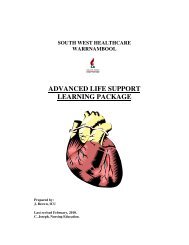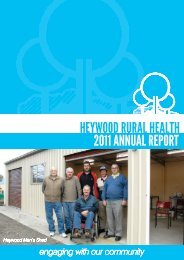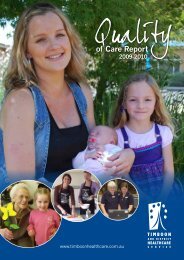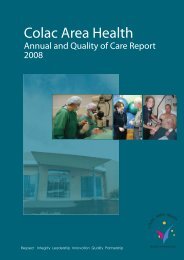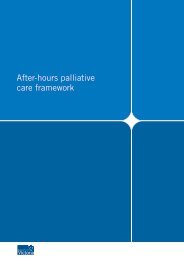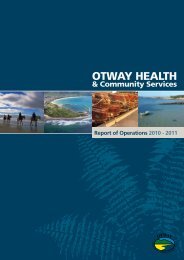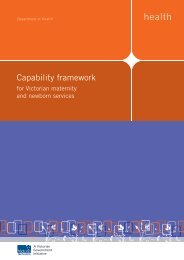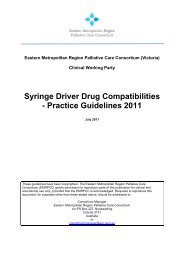Self Directed Learning Package - University of Queensland
Self Directed Learning Package - University of Queensland
Self Directed Learning Package - University of Queensland
- No tags were found...
You also want an ePaper? Increase the reach of your titles
YUMPU automatically turns print PDFs into web optimized ePapers that Google loves.
12 • The Palliative Approach ToolkitWhy is a palliative approach important?A palliative approach can:• reduce distress for residents and their families• reduce transfers to hospital because aged care staff developskills to manage the palliative care needs <strong>of</strong> residents• help to involve the resident and their family in decisionmaking about their care• encourage open and early discussion about death and dyingwhich helps advance care planning• provide opportunities for improved control <strong>of</strong> pain and othersymptoms• allow the resident to be cared for by staff that they know andhave developed a rapport with.Bob has chronic obstructive airways disease (COAD)/emphysema that is worsening. He has already been admitted tohospital once and has said he doesn’t want this to happen again.A palliative approach aims to reduce his suffering throughearly identification, assessment and treatment <strong>of</strong> pain, physical,cultural, psychological, social and spiritual needs.Bob needs review <strong>of</strong> his symptoms particularly his shortness <strong>of</strong>breath. He also has some psychological and social needs thatrequire discussion with his GP, the nursing staff and his wife.Thinking PointSo it seems that a palliative approach is appropriatefor Bob. Would any <strong>of</strong> your current residents benefitfrom a palliative approach?Thinking PointIn the DVD, Bob’s careworker, Kerrie, mentions anumber <strong>of</strong> these important benefits. Can you relatethese points to the care <strong>of</strong> residents in your ownfacility?• When has open and early discussion on death anddying facilitated a good death for a resident?• Has a dying resident been transferred to hospitalunnecessarily?• How did this transfer affect the resident, family andstaff?When does a resident need a palliative approach?Watching the DVD, you would have heard that a palliativeapproach is not limited to the last weeks or days <strong>of</strong> life.It is a philosophy <strong>of</strong> care that may be appropriate many monthsbefore a resident actually dies and aims to improve the quality-<strong>of</strong>lifefor people with an eventually fatal condition and their families.Thinking PointDo you agree that Bob needs a palliative approachto his care? He has been in the facility for over 12months. Why do you think it is only now beingdiscussed?Specialist palliative careIn the DVD, Peter, the GP suggested getting a specialist palliativecare team to help plan for and treat Bob’s severe breathlessness.A small number <strong>of</strong> residents may experience severe or complexproblems as their condition advances. These may be physicalsymptoms or complex ethical dilemmas, family issues orpsychological distress.Specialist palliative care teams do not usually take over the care<strong>of</strong> residents but instead can provide advice on complex issuesand support to GPs and the aged care team.Terminal careWhereas palliative care may take place over many months,terminal care is the care focused on the final days or weeks<strong>of</strong> life.This form <strong>of</strong> palliative care is appropriate when the resident isin the final days or weeks <strong>of</strong> life and care decisions may need tobe reviewed more frequently. Goals are more sharply focusedon the resident’s physical, emotional and spiritual comfort andsupport for the family, including bereavement care.Identifying when a resident is moving into the terminal phase isnot easy because there are few clear indicators to identify whena person should be considered for end <strong>of</strong> life care. (You will readabout this in more detail later in this package).



